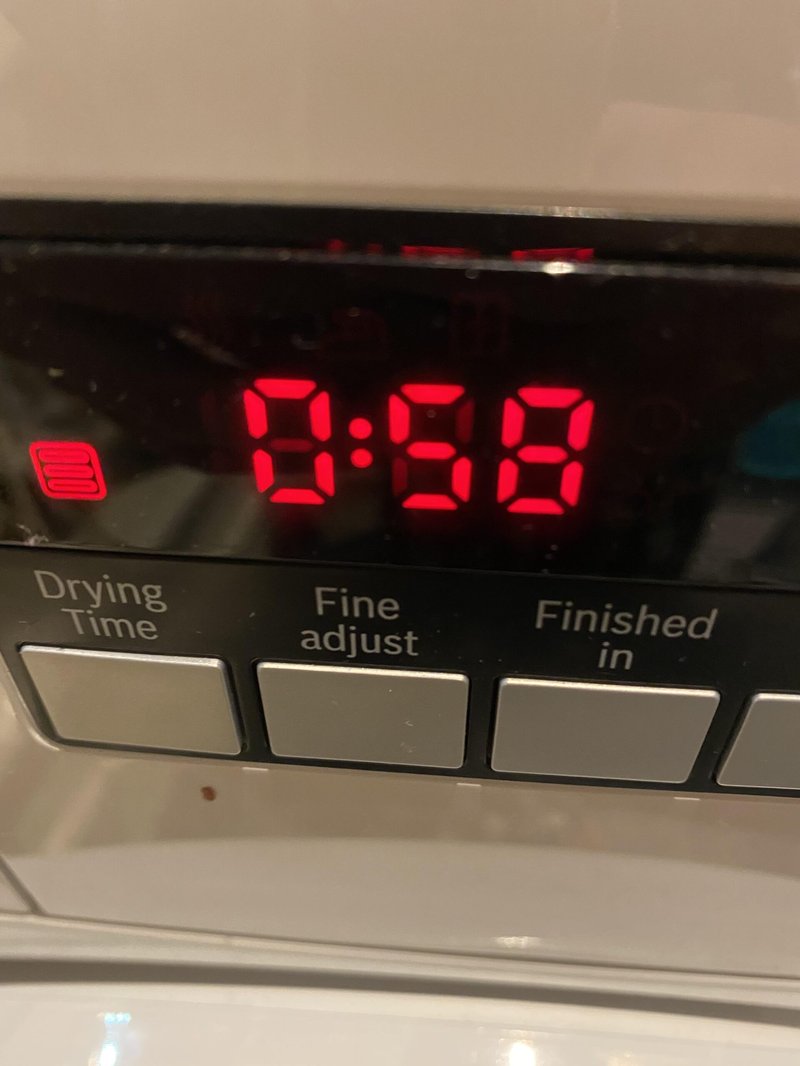
Imagine for a moment that your dryer is a sophisticated computer that’s been tasked with keeping your clothes warm dry. Like any computer, it communicates through codes and symbols when something goes wrong. The “HE” error code in Bosch dryers is a hint from your dryer, signaling it’s having a problem with heating. It’s like the dryer is trying to tell you, “Hey, I’m having trouble getting hot enough to dry your clothes properly.” This could be due to a variety of reasons, ranging from a simple glitch to a more significant mechanical issue.
Now, you might be wondering, why is heating such a big deal? Well, just as a toaster can’t brown your bread without heat, a dryer can’t remove moisture from your clothes without its heating function. Let’s unravel this error code story so you can not only fix it but also prevent it from happening again.
Understanding the “HE” Error Code
First things first: what exactly does this “HE” code signify? In the world of Bosch dryers, “HE” stands for “heating error.” This means there’s some sort of disruption in the heating cycle of your dryer. Think of it like this: it’s as if your dryer is promising to bake a cake but can’t get the oven to heat up, leaving you with batter instead of a baked dessert.
There are a few common culprits behind this error code. Often, it’s due to a blocked vent or lint buildup that’s restricting air flow. Dryers need a continuous flow of air to burn off moisture from your clothes effectively. If air can’t move freely, neither can heat, and your dryer lets you know by displaying that pesky “HE” code. It’s like trying to run a marathon while wearing a mask—you just can’t perform at your best.
Other times, the issue might be more technical, like with the thermostat or a heating element malfunction. These parts have specific jobs, like maintaining the right temperature or actually heating up. If one of these components fails, the dryer can’t function as it should and the “HE” signal pops up. At this point, you might want to face this dryer drama with some DIY spirit or consider calling in a professional to tackle the more complex bits.
Diagnosing the Problem
So, how do you start diagnosing this heating hiccup? Let’s put on our detective hats. Begin by checking the simplest elements first. Is the lint filter clean? A clogged lint filter is a common reason dryers can’t heat properly. If the filter looks like it’s wearing a fur coat, that could very well be your problem. Imagine trying to drink a milkshake through a straw that’s been clogged with paper—it’s not happening!
Next, examine the dryer vent system. A blocked vent doesn’t just trigger the “HE” code; it can also be a fire hazard. Make sure the vent isn’t squished or obstructed by anything. Cleaning or adjusting it might just resolve the issue altogether. Sometimes, just clearing out the path lets your dryer breathe freely again, just as a cleared highway allows traffic to flow without a hitch.
However, if the simple fixes don’t do the trick, it’s time to consider the internal components like the thermostat or the heating element. This is where things can get a bit more complicated, like trying to solve a puzzle where you don’t have all the pieces. If you’re not comfortable fiddling with these parts, there’s no shame in bringing in an appliance repair expert who can put things back in working order.
Prevention and Next Steps
Once you’ve tackled the issue, how do you keep that “HE” code from haunting you again? It’s all about regular maintenance and good practices, just like you’d take care of a car with regular oil changes and check-ups. Clean the lint filter after every load to keep airflow at its best. Schedule regular checks for the vent system as part of your home maintenance routine to keep it clear of obstructions.
If you’ve had to replace parts, pay attention to appliance recall notices or updates from Bosch about your dryer model. Staying informed is like keeping an eye on the weather forecast—you’re less likely to get caught in a storm unprepared.
Should the error code persist despite your efforts, consider consulting Bosch customer service for advice or professional repair services. They can provide guidance tailored to your specific model and scenario, potentially saving you time and avoiding further issues. Ultimately, being proactive and attentive to your dryer’s needs can help keep it running smoothly and error-free for years to come.